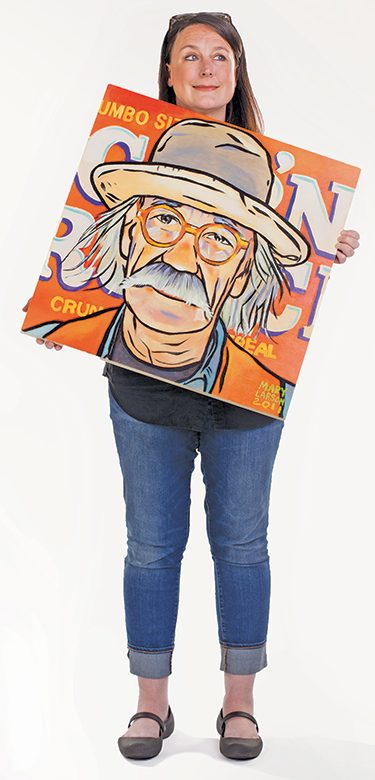Character: Mary Larson, nurse, painter, friend to the homeless
The Harborview nurse barters her portraits to help the homeless in Seattle.
I always thought I wanted to be a
… commercial airline pilot. But then in my senior year, I got hit with a lacrosse ball. It’s like a rubber pool ball. It came at my face from about 30 feet away and broke my nose. I was sent to Children’s Orthopedic and stayed the night. The nurses were amazing. I went in wanting to be a pilot and came out wanting to be a nurse.
My high school teachers
… would load us up and drive us to St. Martin de Porres, a shelter south of downtown near Safeco Field. We would serve sandwiches and then just visit.
I went to college in a small town
… in Montana that had just one homeless shelter. The school didn’t know much about it. It didn’t have any nursing services. But when I got there to do my community health rotation, I felt a special spark.
In Washington, D.C., I volunteered
… at the first medical respite center for homeless men and women in the U.S. It’s for people who aren’t quite sick enough to be in a hospital, but too sick to be on the street.
I’ve been at the Pioneer Square
… clinic for nearly 20 years: We provide primary care and other services to people in the downtown corridor, and some of the most vulnerable people downtown. We see everything including broken bones and assault injuries as well as high blood pressure, diabetes and heart disease. And all that is often coupled with issues from being outside all the time.
I remember the day I started
… painting very clearly. It was raining. I was in Fremont where there was an art store. I went inside and got some bright acrylic paints. I painted from photographs I had taken of homeless patients. I think people’s faces tell stories. They were happy to let me take their pictures.
We hung the paintings in the clinic.
Patients would say to me, “You know those paintings out there? I can tell they’re homeless.” I’d ask “How do you know?” and they would say, “I was homeless once and I can tell.” I think they really connected with them. Some would say, “I want to be in one.”
It didn’t feel right to be
… selling the paintings for money. We had just run out of socks at the clinic—some of our patients wear the same socks for three months—so I marked a painting for 750 pairs of socks. Then I thought we could get some stocking caps, too. And maybe some new gloves. Within a week all the paintings were sold, and for more than the asking price.
I paint at home in a room above
… the garage and my son brings his Legos and keeps me company. The backgrounds of the portraits help me remember each person’s story. There’s one man who rides his bike to the clinic, and I used copy from a sign for a bike shop as a background. Another is from Baltimore, so I used an old sign for the Orioles. Sometimes I just use items I find around the clinic like a can of beans I found under a chair in the lobby.
To date, Larson has raised more than 30,000 pairs of socks, nearly 14,000 pairs of gloves and 12,500 cans of food.
